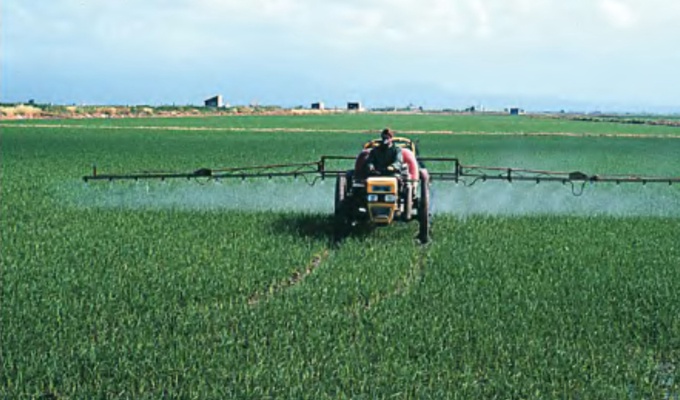Herbicides, also commonly known as weedkillers, are substances used to control undesired plants, also known as weeds. Selective herbicides control specific weed species, while leaving the desired crop relatively unharmed, while non-selective herbicides can be used to clear waste ground, industrial and construction sites, railways and railway embankments as they kill all plant material with which they come into contact. Apart from selective/non-selective, other important distinctions include persistence, means of uptake, and mechanism of action . Historically, products such as common salt and other metal salts were used as herbicides, however these have gradually fallen out of favor and in some countries a number of these are banned due to their persistence in soil, and toxicity and groundwater contamination concerns. Herbicides have also been used in warfare and conflict.
Modern herbicides are often synthetic mimics of natural plant hormones which interfere with growth of the target plants. The term organic herbicide has come to mean herbicides intended for organic farming. Some plants also produce their own natural herbicides, such as the genus Juglans (walnuts), or the tree of heaven; such action of natural herbicides, and other related chemical interactions, is called allelopathy. Due to herbicide resistance – a major concern in agriculture – a number of products combine herbicides with different means of action. Integrated pest management may use herbicides alongside other pest control methods.
In the United States in 2012, about 91% of all herbicide usage, determined by weight applied, was in agriculture. In 2012, world pesticide expenditures totaled nearly $24.7 billion; herbicides were about 44% of those sales and constituted the biggest portion, followed by insecticides, fungicides, and fumigants. Herbicide is also used in forestry, where certain formulations have been found to suppress hardwood varieties in favor of conifers after clearcutting, as well as pasture systems, and management of areas set aside as wildlife habitat.
